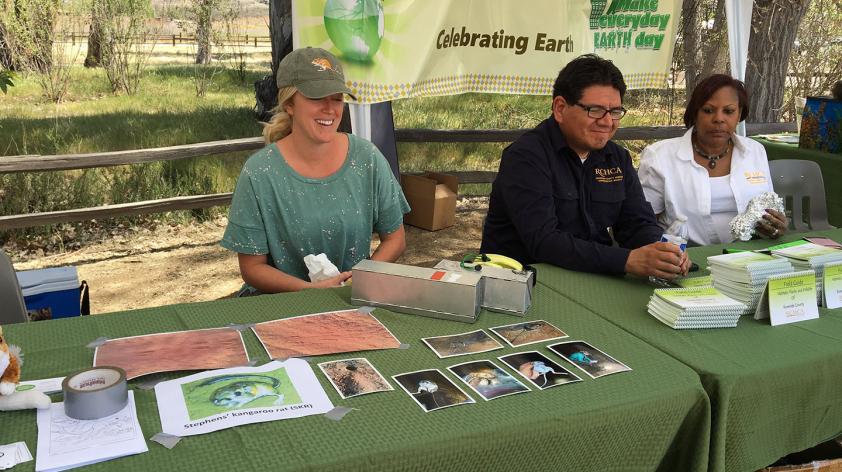
The Stephens’ Kangaroo Rat: The Animal Star
My coworker, Emily Gray, and I celebrated Earth Day this year by promoting one of our study species, the Stephens’ kangaroo rat (SKR). SKR are one of the animal stars (endangered species) that live on the Southwestern Riverside County Multi-species Reserve near Temecula, California. Riverside County Regional Parks and Open Space District held a special event called ‘Earth Day Alive: Where Species Come to Life’ at the Alamos Schoolhouse right next to one of our best SKR study sites. The event involved crafts and activities and a nature hike where people were able to see SKR burrows.
Most people haven’t ever seen a kangaroo rat, and to be fair, they are hard to see, being small, nocturnal animals. But once people saw what they looked like, the overwhelming reaction was “Aww they are so cute!” A statement with which we, of course, wholeheartedly agree. They have huge black eyes, a dome head and glossy fur (a recipe for cuteness) but it’s always nice to have validation and kangaroo rat props!
One of the most common questions people asked was if they bite. As a wild animal of course they might bite, especially if you stick your finger close to their mouth. But in general, compared to other species of small mammals and even other kangaroo rats, SKR are especially docile. They are lovely to work with and sometimes when you set them on the ground after taking the required data they just sit there and stare back up at you with their gorgeous doe-eyes, lingering before they casually hop away to a nearby burrow.
One of the special abilities of a SKR is that they can jump up to 6 feet (1.8 meters) in distance! That is a lot considering their body length is less than 5 inches (13 cm). At the Earth Day event there was a giant ruler so that people could try to jump as far as a kangaroo rat.
The event was a great way for us to draw attention to and highlight a local San Diego and Riverside County endangered species. SKR are flourishing on the multi-species reserve but much of their wider habitat has been lost or is fragmented and degraded. The current total population trend is decreasing but it helps to have the support of our newly converted Stephens’ kangaroo rat fans.













